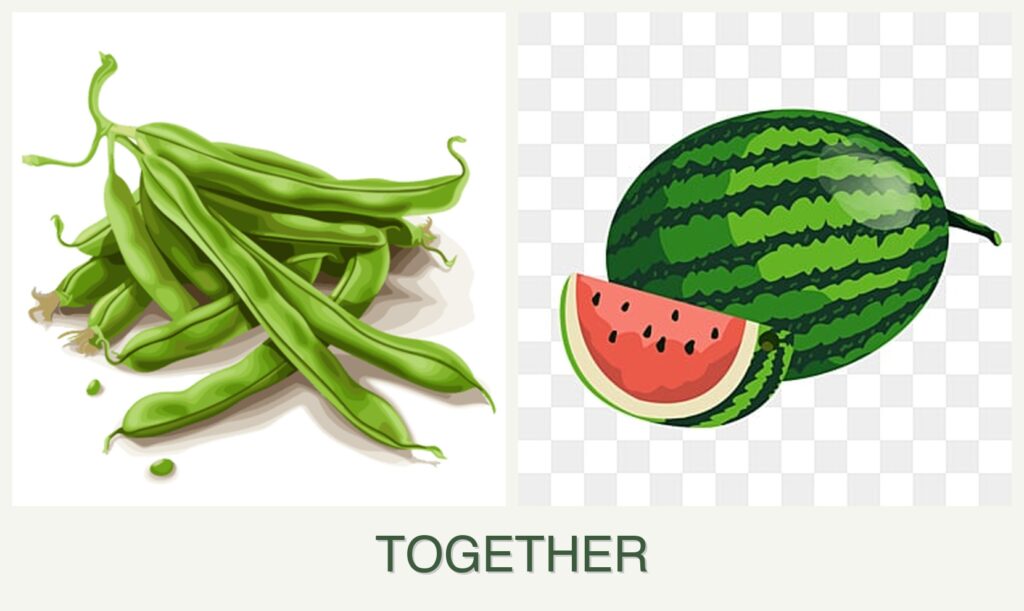
Can you plant beans and melons together?
Can You Plant Beans and Melons Together?
Introduction
Companion planting is a popular technique among gardeners aiming to boost plant health and yield. When it comes to beans and melons, their compatibility is often questioned. This article will explore whether these plants can grow together successfully and provide practical tips for your garden.
Compatibility Analysis
Yes, you can plant beans and melons together. These two plants can complement each other well if their growing conditions are carefully managed. Beans are nitrogen-fixers, meaning they enrich the soil with nitrogen, benefiting melons, which are heavy feeders. However, both plants have sprawling growth habits, so adequate space is necessary to avoid competition. Additionally, beans can help deter pests that commonly affect melons, making them a natural companion.
Growing Requirements Comparison Table
| Requirement | Beans | Melons |
|---|---|---|
| Sunlight | Full sun | Full sun |
| Water | Moderate | Consistent moisture |
| Soil pH | 6.0 – 7.0 | 6.0 – 6.8 |
| Soil Type | Well-drained | Sandy loam |
| Hardiness Zones | 3-10 | 4-9 |
| Spacing | 3-6 inches apart | 18-24 inches apart |
| Growth Habit | Climbing/bushy | Sprawling vine |
Benefits of Planting Together
Planting beans and melons together offers several advantages. Beans improve soil fertility by fixing nitrogen, which is crucial for melon growth. This pairing can also enhance space efficiency in your garden, as beans can be trained to climb on trellises, leaving ground space for melons. Additionally, the presence of beans can attract beneficial insects and deter pests like aphids and beetles, which often target melons.
Potential Challenges
Growing beans and melons together isn’t without its challenges. Both plants can compete for sunlight and nutrients, so proper spacing is critical. Melons require consistent watering, while beans prefer moderate moisture, necessitating careful water management. Disease susceptibility, such as powdery mildew, can also be a concern, though crop rotation and attentive care can mitigate these issues. Harvesting can be tricky as well, with melons sprawling on the ground and beans climbing upwards, so planning for ease of access is important.
Planting Tips & Best Practices
- Optimal Spacing: Plant beans 3-6 inches apart and melons 18-24 inches apart. Consider vertical supports for beans to maximize space.
- Timing: Plant beans after the danger of frost has passed, and sow melons when the soil has warmed to at least 70°F.
- Container vs. Garden Bed: Both plants can thrive in garden beds. If using containers, ensure they are large enough to accommodate root growth.
- Soil Preparation: Enrich the soil with compost before planting to support melon growth. Ensure good drainage to prevent root rot.
- Additional Companions: Corn and marigolds work well with both beans and melons, offering additional pest control and soil benefits.
FAQ Section
Can you plant beans and melons in the same pot?
It’s not recommended due to their different spacing and growth requirements. Use separate pots or a large garden bed.
How far apart should beans and melons be planted?
Beans should be 3-6 inches apart, and melons 18-24 inches apart, allowing ample space for growth.
Do beans and melons need the same amount of water?
No, melons require consistent moisture, while beans prefer moderate watering.
What should not be planted with beans and melons?
Avoid planting onions and garlic near beans, as they can inhibit growth. Potatoes should not be planted near melons.
Will beans affect the taste of melons?
No, beans will not affect the taste of melons.
When is the best time to plant beans and melons together?
Plant beans in spring after frost, and sow melons when the soil temperature reaches 70°F.
By understanding the compatibility and requirements of beans and melons, you can create a thriving vegetable garden that maximizes space and enhances plant health. With careful planning and management, these plants can be excellent companions.



Leave a Reply